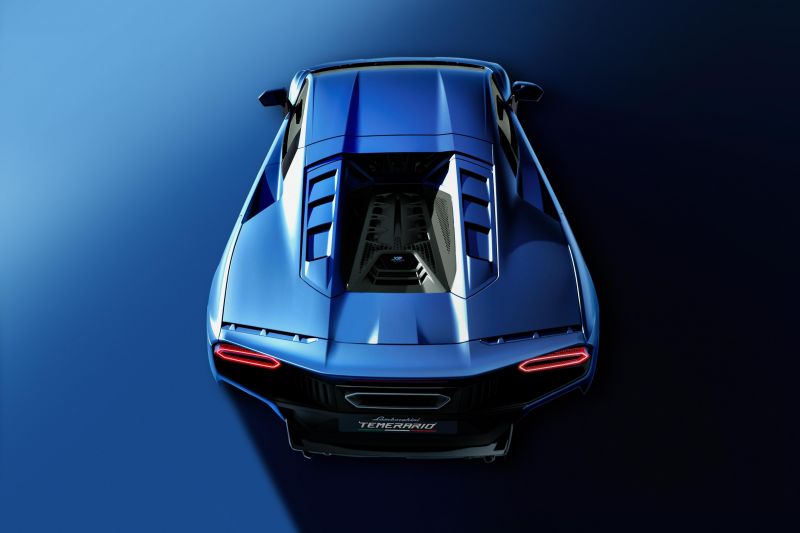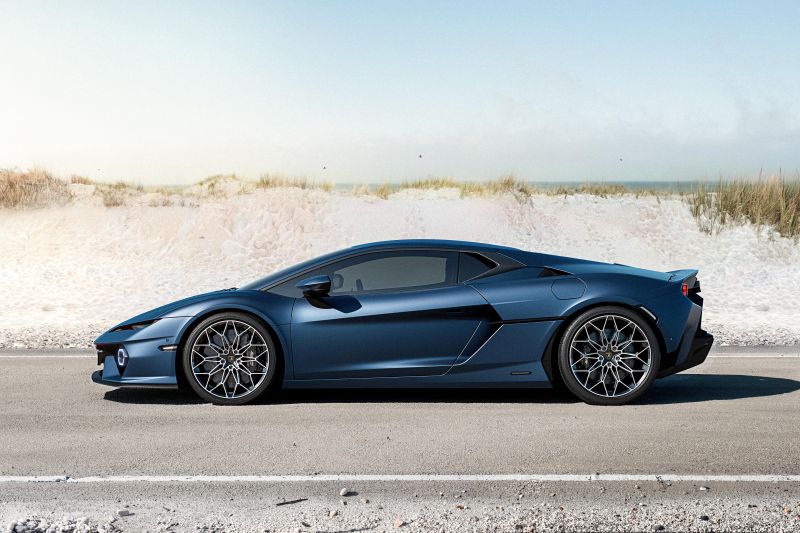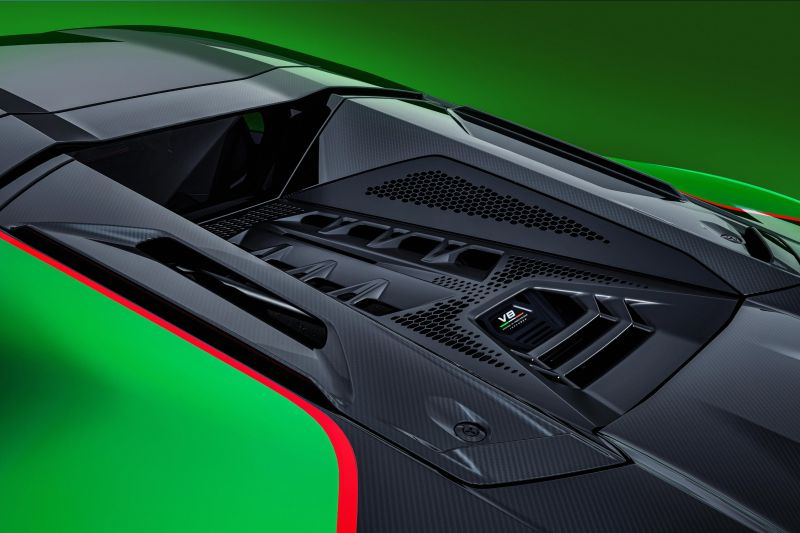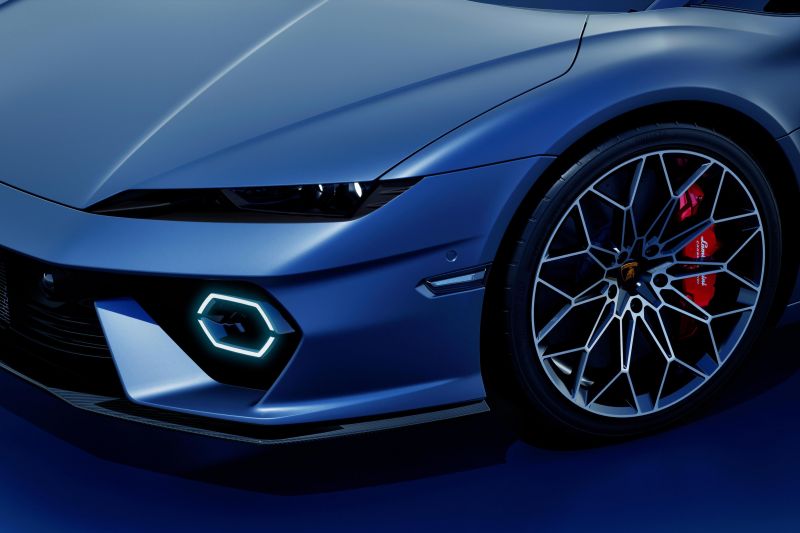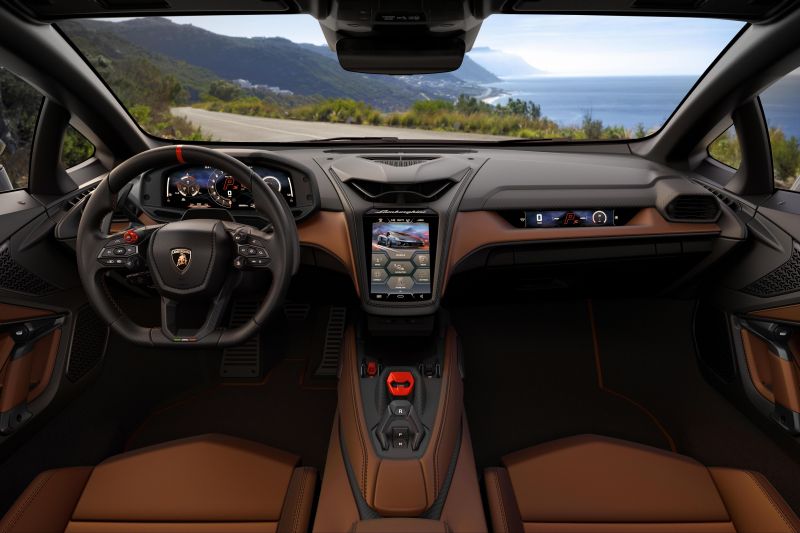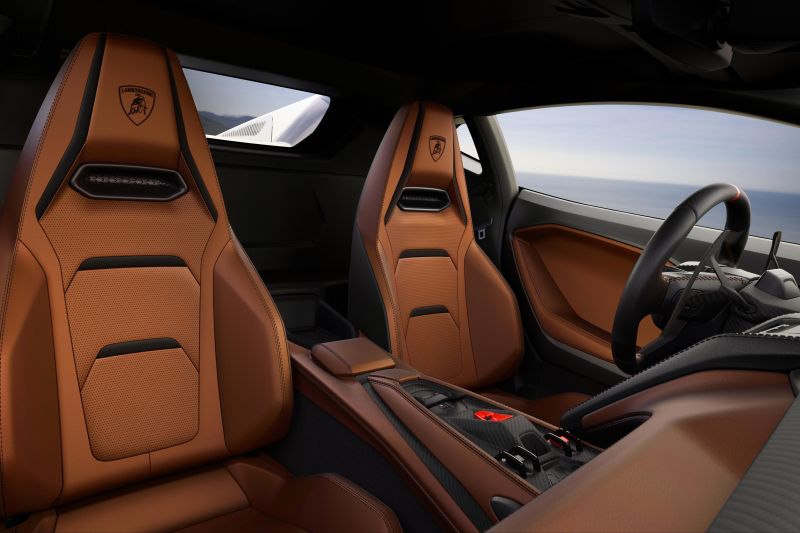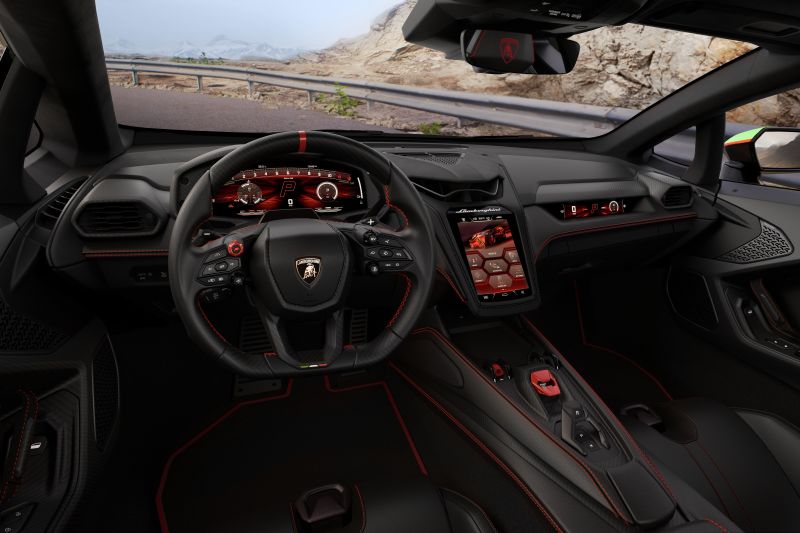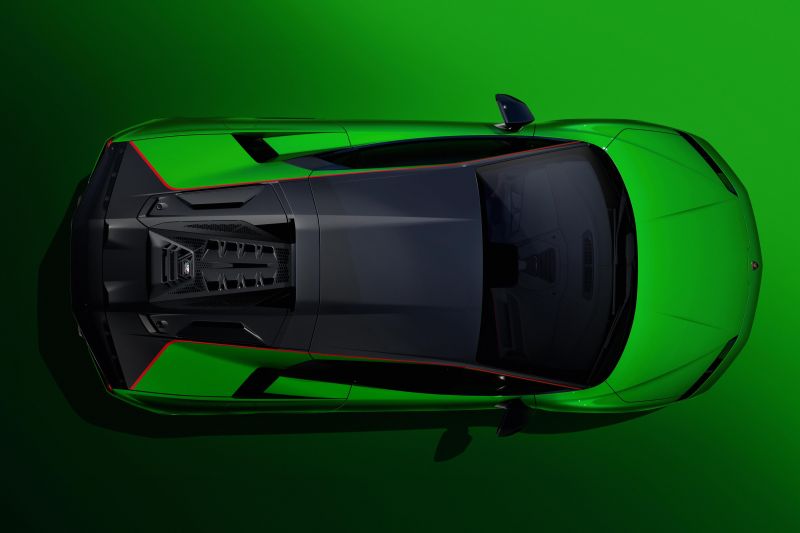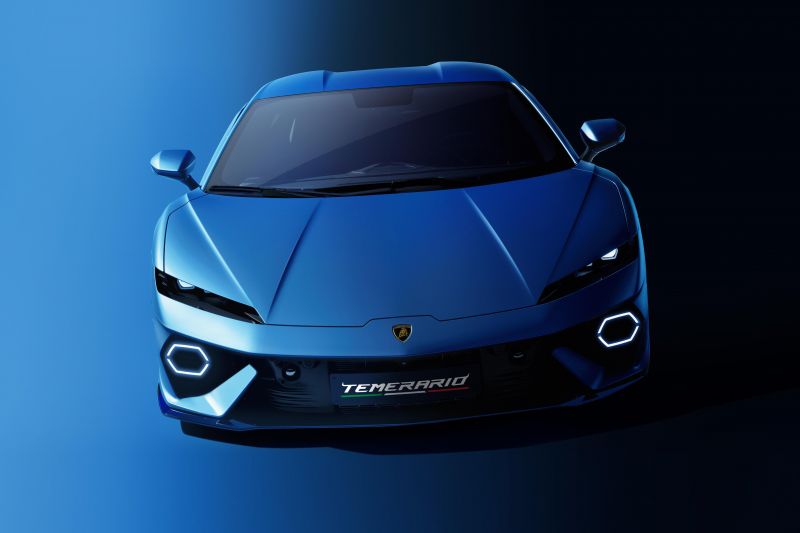[ad_1]
Lamborghini has introduced the Temerario, a supercar that replaces the naturally aspirated V10 Huracan. The new model features a bi-turbo plug-in hybrid V8 engine.
This announcement follows Lamborghini’s recent shift from the V12-powered Aventador to the Revuelto, which also utilizes a plug-in hybrid (PHEV) V12 engine.
The automaker boasts that the new twin-turbo V8 is the first and only production super sports car engine capable of reaching an impressive 10,000 rpm.
The new engine works in conjunction with three oil-cooled axial flux electric motors—one embedded in the V8 unit and two located on the front axle. Each electric motor generates 110 kW and weighs 15.5 kg. Together with a 3.8 kWh lithium-ion battery, this setup allows for all-electric driving possibility. Lamborghini claims that this configuration leads to a 50% reduction in CO2 emissions compared to the Huracan.
The entire system produces a total output of 677 kW, enabling a remarkable 0-100 km/h acceleration in just 2.7 seconds.
Here are the key features of the supercar’s powertrain:
| Lamborghini Temerario | |
|---|---|
| Engine | Bi-turbo 4.0L V8 with flat-plane crank |
| Engine power | 588kW @ 9000-9750rpm |
| Engine torque | 730Nm @ 4000-7000rpm |
| Electric motor power | 220kW @ 3500rpm |
| Total system power | 677kW |
| Transmission | 8-speed dual-clutch auto |
| Drive type | All-wheel drive |
| 0-100km/h time | 2.7 seconds |
| Top speed | 343km/h |
| Battery | 3.8kWh lithium-ion |
Lamborghini states that the electric motors are designed to fill torque gaps, and the turbochargers provide high torque at elevated engine speeds. The company claims that the powertrain delivers a linear performance sensation reminiscent of a naturally aspirated engine’s high-revving attributes.
Positioned within the engine’s V configuration, the turbochargers can generate a maximum boost pressure of 2.5 bar.
However, it’s not solely about the specifications, as Lamborghini has dedicated significant technical resources to ensure that the Temerario’s powertrain offers an “unmistakable audio experience.”
Chief Technical Officer Rouven Mohr remarked, “With the V8 biturbo, the sound’s amplitude and frequency rise in tandem with engine speed, and the flat-plane crankshaft generates subtle vibrations that emphasize the engine’s power depending on its RPM.”
The automaker emphasizes a “special connection” between the engine banks to enhance sound quality based on engine speed. The exhaust system’s design, from the manifold to the tailpipes, ensures a “clear and clean sound.”
Additionally, engineers have crafted the engine mounts and chassis to ensure a flat crankshaft character that is noticeable at high speeds or under full load.
A sound symposer introduces acoustic waves into the cabin, and the electric drive unit produces its own unique sound.
The sound profile of the Temerario varies across different driving modes, from a quiet setting (Città mode) to a “comfortable and homogeneous” feel (Strada), and finally to an “amplified and exhilarating” experience (Sport and Corsa).
The vehicle also features new driving modes: Recharge, Hybrid, Performance, and Drift, the latter offering three distinctive levels. Lamborghini asserts that there are a total of 13 unique driving experiences.
The new eight-speed dual-clutch automatic transmission (DCT) is lighter than the seven-speed DCT found in the Huracan and provides quicker shifts. This transmission is installed transversely behind the V8.
Lamborghini has included an electric torque vectoring system to enhance cornering agility and high-speed stability, intervening on the brakes only when necessary.
The car features a fully aluminum body and is built on a newer, more rigid aluminum chassis, which has improved torsional stiffness by 20%.
With a dry weight of 1,630 kg, the Temerario is heavier than the Huracan, which weighed 1,422 kg. The 3.8 kWh lithium-ion battery is strategically placed in the central tunnel to maintain a low center of gravity.
The battery can be charged at a maximum of 7 kW using AC power and is also recharged during regenerative braking.
The Temerario is equipped with Bridgestone Potenza Sport tires, sized 255/35 ZR20 at the front and 325/30 ZR21 at the rear.
Braking is provided by carbon-ceramic discs with fixed aluminum monoblock calipers, featuring 10 pistons at the front and four at the rear.
The brake discs measure 410 mm by 38 mm in front and 390 mm by 32 mm in the rear.
Lamborghini asserts that the new spaceframe chassis not only enhances rigidity but also increases interior space, claiming more passenger and cargo room than any competitor in its category.
Headroom and legroom have improved by 34 mm and 46 mm, respectively, accommodating passengers up to 200 cm tall—even with a helmet.
The center console is designed to hold a smartphone and wallet, while there is 112 liters of storage space under the bonnet.
The supercar comes standard with electrically adjustable sports seats, with an option for carbon-fiber double-shell seats. Additionally, 18-way comfort seats with heating and ventilation features are available.
The interior is tailored to provide a driver-focused experience, featuring intuitive controls and an aviation-inspired start/stop button.
A newly designed racing-style steering wheel incorporates a red-crowned rotor for drive mode selection, along with a button for raising the vehicle and a launch control function. The steering wheel also houses indicator switches.
Activating launch control is straightforward with a simple button press.
The car features a 12.3-inch digital instrument cluster, an 8.4-inch central infotainment touchscreen, and a slim 9.1-inch display for the passenger.
The infotainment system supports wireless Android Auto and Apple CarPlay.
Additionally, an available Lamborghini Vision Unit (LAVU) employs three cameras—inside and outside the vehicle—with a dedicated control unit for recording drives.
The Lamborghini Unica app enables remote monitoring of various parameters, including fuel and charge levels.
An onboard telemetry application allows users to view information on circuit and lap times, encompassing over 150 locations.
As expected from Lamborghini, there are extensive customization options, allowing numerous interior and exterior components to be specified in carbon fiber. The Ad Personam program will provide over 400 different exterior colors and liveries.
Wheels can be selected in cast, forged, or carbon styles, along with various color options.
An optional Alleggerita (lightweight) package trims 12.65 kg off the body and reduces interior weight by 25 kg.
This package includes a carbon fiber-reinforced polymer (CFRP) splitter and skirts, recycling carbon fiber underbody panels, and various carbon fiber interior elements, along with lightweight rear window glass and fixed polycarbonate side windows.
The exterior of the Temerario unmistakably bears Lamborghini’s signature style, with an updated design featuring a hexagonal motif reflected in the daytime running lights, side air intakes, tail lights, and exhaust outlets.
The engine is prominently visible, reminiscent of how motorcycle engines are showcased under transparent hoods.
Rear downforce is enhanced by 103% relative to the Huracan Evo, increasing to 158% with the Alleggerita Pack option.
With the launch of the Temerario, Lamborghini now features an electrified powertrain across all three of its vehicle lines. A fully electric model from the brand is anticipated to be released by 2028.
Click an image to view the full gallery.
.
[ad_2]
